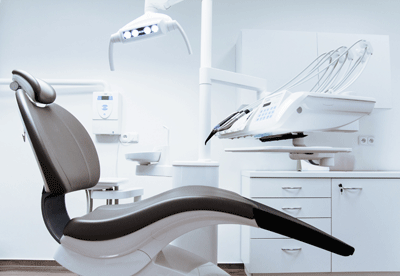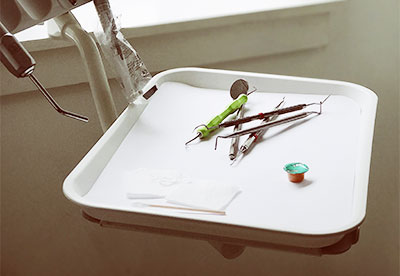Post-Op Care for Tooth Extractions
After a tooth extraction, good post-operative care by the patient at home is crucial to a successful recovery. While the extraction procedure is simple and often very quick, it is still a major oral surgery, requiring attention and care to heal properly and avoid any unpleasant complications. The good news is that with the right post-op care, healing after a tooth extraction is relatively quick and recovery time should be minimal.
What To Expect
If you have been sedated during the procedure, you should plan on having a friend or family member drive you home. You’ll be sent home with complete instructions on how to take good care of the extraction site. We typically have you bite down on gauze, providing pressure to stop bleeding from the extraction, and will send you home with plenty more gauze to change out over the course of the day. This can be removed once the immediate bleeding stops. Following surgery, you can expect minor bleeding or “oozing” for the first two days. Swelling often takes a week or so to subside, with the worst occurring the second and third days after surgery. General pain and discomfort is expected, but should gradually improve over the course of five or seven days. You may also experience tightness and stiffness in your jaw.
Post-Op Instructions
It’s important to follow your post-visit instructions carefully. Not doing so can lead to a very painful condition called dry socket, in which the usual blood clot protecting the empty socket is disturbed or removed. This can leave bone and tissue exposed, causing great pain and slowing the healing process. To protect yourself from dry socket, avoid disturbing the blood clot. You can do that by avoiding any kind of smoking or tobacco use, avoiding the use of straws or any sucking motion in your mouth, waiting to brush and floss in the area until it’s completely healed, and avoiding rinsing or spitting too hard.
What Can I Eat?
For the first few days, you should stick to soft, cool foods that are neither hot nor cold. Soup at room temperature is good, and so are foods like pudding, cottage cheese, yogurt, applesauce and Jell-O. Stay away from carbonated, iced or hot beverages for several days. After three or four days, you can begin expanding your diet to other foods and temperatures, as long as they don’t cause you pain or discomfort.
Dental Hygiene
In the first 24 hours after a tooth extraction, don’t rinse your mouth at all. After that, we recommend gentle rinsing with lukewarm salt water after eating or drinking , using a tilting motion instead of swishing. You can continue this for a week or two depending on how well you’re healing. You can start brushing gently in other areas of your mouth on the second day, too. It’s not a good idea to brush right around the extraction site for at least two weeks.
Managing Pain
Depending on the patient and the surgery, you may be given prescription painkillers, or we may recommend using over-the-counter anti-inflammatory and pain medications like Advil or Tylenol. Follow the instructions for any pain medications closely to avoid taking too much or not enough. You may also be prescribed a short course of antibiotics as a preventative measure. Using ice packs is always recommended to keep pain and swelling to a minimum. During the first 24 hours, use ice on the affected side of the jaw or face for 20 minutes at a time, taking at least 10 minutes off between rounds. After that, stop using ice and switch to gentle heat, like a warm wet towel or compress, to soothe the remaining pain and swelling.
Following Up
Your MPDG dentist will schedule you a follow-up appointment to check on your progress in about two weeks after your tooth extraction. Be sure to bring any questions you have that may have come up during your recovery. And, if you have an increase in pain, swelling, bruising, start running a fever, or other complications before your follow-up visit, call your dentist and let them know right away. Infection and other complications after oral surgery are very rare, but if you’re worried, we’ll be happy to check up on you sooner and make sure everything’s all right.
See what our happy patients are saying:
Margot H.
I've been to a dozen different dentists all over the country. Every aspect of Dr Falkel's expertise and office flow is superior. I never feel hustled or up sold. Best value and care I could want. Can I give MORE than 5 stars?!! Well deserved.
Kathleen G.
This staff of professionals works together beautifully. The tooth cleaning and examination glide from one to the other with no waiting. Angela, the angel who cleans teeth is thorough but gentle. I cannot recommend this group more!
Phil S.
Dr. Ikemiya and his wonderful staff are first rate! My experiences here could not have been better.






